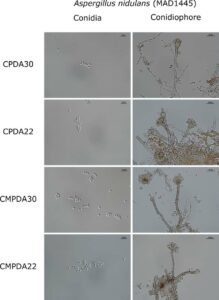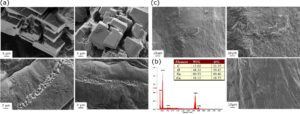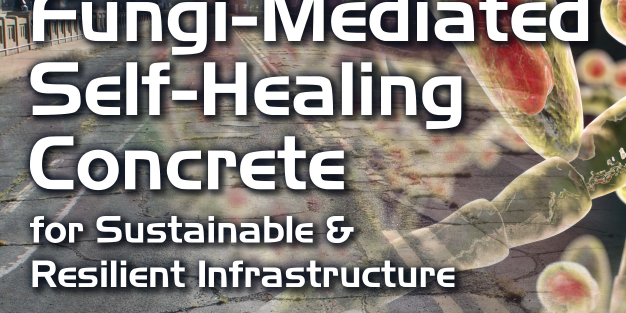Sustainability (durability and reliability that can be affordably maintained) and resiliency (withstanding and rapidly recovering from hazards) are two key characteristics of the American infrastructure system. However, the U.S. is facing critical challenges associated with progressively aging infrastructure. The 2017 Infrastructure Report Card issued a grade of D+ to the overall condition of the U.S. infrastructure [1].
Bridges are illustrative of poorly maintained infrastructure. Out of the 600,000 bridges in the U.S., 40 percent are 50 years or older and 9 percent were structurally deficient in 2016, but, on average, 188 million trips were made across a structurally deficient bridge each day [1]. Long-term aging and deterioration of structures is not only a sustainability issue but also poses a significant threat to structural resiliency in the event of natural and man-made hazards, such as earthquakes, explosions, and hurricanes.
Recent structural failures and collapses illustrate that the current infrastructure cannot adequately face the broadening range of threats to public structures and facilities. For example, according to the Association of State and Dam Safety Officials, from 2005 to 2013, state dam safety programs reported 173 dam failures and 587 incidents that, without intervention, would likely have resulted in dam failure [2].
In 2013 the White House issued Presidential Policy Directive on Critical Infrastructure Security and Resilience (PPD-21) to advance a national effort to strengthen resilient critical infrastructure [3]. It directed the Department of Homeland Security, Department of Defense (DoD), and other federal agencies to focus research and development activities on maintaining the reliability and resilience of critical infrastructure. Since then, mitigating disasters caused by aging and declining infrastructure has become a focus of several federal agencies, including agencies within DoD. For example, the U.S. Army Corps of Engineers (USACE) launched an updated version of its Resilience Initiative Roadmap in 2016, which identifies three strategies to evolve resilience, including Strategy 1 that, in part, aims to identify/develop resilience standards and best practices for resilience. Major areas of this strategy aim to ensure reliability, minimize failure, and preserve
functionality when conditions change [4].
Concrete infrastructure suffers from significant deterioration and has been a major focus of federal agencies. Concrete is the most widely used construction material, and cracking is very common owing to the effect of various chemical and physical phenomena, including drying shrinkage, alkali-silica reaction, freezethaw cycles, reinforcement corrosion, and fatigue. Cracks themselves may not significantly affect the load-carrying capacity of concrete in the short term, but cracks significantly impair durability, as they provide an easy path for the ingress of liquids and gasses that may potentially contain corrosive agents that can degrade steel reinforcements.
A key way to bolster concrete-based critical infrastructure is through the use of state-of-the-art technology, as evidenced by the USACE Civil Works Strategic Plan 2014-2018, which supports an “invest[-ment] in research that improves the resiliency of structures” [5]. Considering the significant number of concrete structures in the U.S. that require frequent inspection as well as the extensive amount of funding required to fix them, innovative ideas are urgently needed to tackle the concrete infrastructure challenge. Recently, the authors were part of a collaborative
research team from Binghamton University and Rutgers University that published work on a new type of concrete that can automatically heal harmful cracks without human interference or intervention.

Figure 1. T. reesei spores germinated on concrete into hyphal mycelium and grew equally well with or without concrete. In comparison, neither A. nidulans nor U. dimorpha germinates on concrete. Adapted from [9].
Background
The concept of self-healing concrete has already been investigated by the federal government for use in critical infrastructure. The Transportation Research Board reviewed uses of engineered nanomaterials in concrete and assessed the mentions of self-healing concrete mechanisms in the literature [6]. To date, self-healing mechanisms in concrete can be divided into three categories: autogenous healing, encapsulation of polymeric material, and microbial production of calcium carbonate precipitation. Autogenous healing is the natural process of concrete crack repair in the presence of water or humidity [7].
However, it is limited to small cracks less than 0.2 mm wide. Encapsulation of polymeric material can fill cracks in concrete by conversion of healing agent to foam in the presence of moisture. Although the chemicals released from incorporated hollow fibers inside concrete can fill the cracks, these materials are not usually compatible with concrete compositions. For example, the filler and the crack may have different mechanical properties and thermal expansion coefficients, and, in some cases, this incompatibility causes the existing cracks to propagate further [8].
Due to the aforementioned limitations, the biological repair technique based on the application of mineral-producing microorganisms has become a viable alternative. It has been demonstrated that in the presence of a calcium source, CaCO3 (as one of the most suitable fillers for concrete cracks owing to the high compatibility with concrete compositions) can be precipitated by bacteria through biologically induced mineralization process. This microbial approach is advantageous over the other self-healing techniques due to superior microcrack-filling capacity, strong bonding between filler and crack, high compatibility with concrete compositions, favorable thermal expansion, and sustainability. It has been found that bacteria can precipitate CaCO3 through many different pathways, such as urea hydrolysis [9], metabolic conversion of organic compound to CaCO3 [10], and dissimilatory nitrate reduction [11]. While general research on bacteria-me-diated, self-healing concrete indeed achieved a certain level of success, there has been little progress in respect to the long-term healing efficacy and in-depth consolidation, mainly due to the limited
survivability and calcinogenic ability of the bacteria. Concrete is considered an extreme environment for microbes mainly due to its high pH values. The matrix of young concrete is typically characterized by pH values between 11 and 13 due to the formation of Ca(OH)2, which is, after calcium-silica-hydrate, quantitatively the most important hydration product. Other harsh conditions include severe moisture deficit, varied temperatures, and limited nutrient availability, which often dramatically influence the microbial metabolic activities that could lead to bacterial death. Further investigation into alternative microorganisms for the application of self-healing concrete is necessary.

Figure 2. For the case of A. nidulans
(MAD1445), abundant conidia were observed from the plates with concrete, which had similar morphology compared to those produced on the plates without concrete.
Fungi-Mediated Self-Healing Concrete
The research team from Binghamton University and Rutgers University recently explored a revolutionary self-healing approach in which fungi are used to promote calcium mineral precipitation to heal cracks in concrete infrastructure [12]. It is widely believed that filamentous fungi possess distinct advantages over other microbial groups for use as biosorbent materials to attract and hold metal ions because of superior wall-binding capacity and extraordinary metal-uptake capability [13]. Although the exact mechanisms accounting for calcium mineralization by fungi are not completely understood, it has been concluded that fungal metabolic activities can influence two factors, carbonate alkalinity and Ca2+ concentration, which are critical for the precipitation of CaCO3 [14].
Typical fungal metabolic activities that can decrease alkalinity are heterotrophic respiration leading to an increase in pCO2, production of organic acids, and excretion of H+ during fungal thigmotropism. On the contrary, water consumption, physicochemical degassing of fungal respired CO2, organic acid oxidation, nitrate assimilation, and urea mineralization can increase alkalinity. Ca2+ concentration within metabolically active fungal cells should be under strict control. For example, Ca2+ must be concentrated at the apex for proper apical growth and instantly decreased in subapical regions. To keep Ca2+ concentration in the cytoplasm at low levels, fungi need to actively pump it out of the cell or bind it onto cytoplasmic proteins.
Fungi may also be used through organomineralization. Fungi have chitin in their cell walls, which is a substrate that significantly reduces the required activation energy for nucleus formation so that the interfacial energy between the fungi and the mineral crystal becomes lower than the one between the mineral crystal and the solution. Thus, cation binding by fungi can occur by means of metabolism- independent binding of ions onto cell walls, which is an important passive property of both living and dead fungal biomass, leading to nucleation and deposition of mineral phases. Bound Ca2+ can interact with soluble CO3 2-, leading to CaCO3 deposition on the fungal hyphae. High concentrations of Ca2+ and CO3 2- in solution are likely to represent a stress for fungal cells owing to subsequent osmotic pressure and Ca2+ cytotoxicity. The formation of CaCO3 has been suggested as a strategy to immobilize excessive Ca2+. Excessive alkalinity could also represent a source of stress, and precipitation of CaCO3 may be due to intracellular protection.

Figure 3. SEM and EDS spectra of the calcium carbonate precipitation: (a) fungi-inoculated medium; (b) EDS spectra; and (c) fungi-free medium.
Adapted from [9].
Methodology
The following three criteria were used by the researchers to select candidate fungi: 1) organisms should be eco-friendly and nonpathogenic (pose no risk to human health and be appropriate for use in concrete infrastructure), and 2) fungi added to the concrete mixture do not only have to resist mechanical stresses due to mixing but should also be able to withstand a high alkalinity for prolonged periods. Therefore, most promising fungal agents appear to be alkaliphilic spore-forming fungi. The fungal spores, together with nutrients, can be added into concrete during the mixing process. When cracks appear and water finds its way in, the dormant fungal spores will germinate, grow, and precipitate CaCO3 to in situ heal the cracks. When the cracks are completely filled and, ultimately, no more water can enter, the fungi will again form spores. As the environmental conditions become favorable in later stages, the spores could reawaken. 3) It is preferred that the genomes of the fungi have been sequenced and are publicly available so they can be genetically manipulated to enhance crack repair performance.
Along with the wild-type strains, a large range of mutants that are affected in a variety of metabolic pathways will also be tested. Because only a few fungi can handle the high pH of a concrete environment, pH regulatory mutants will be the focus. It is well known that many microorganisms can tailor gene expression to the pH of the growth environment if they are able to grow over a wide pH range [15]. Irrespective of ambient pH, a type of alkalinity-mimicking mutations believe they are always at alkaline pH and trigger a pattern of gene expression similar to that in the wild type grown under alkaline conditions [15], which is exactly what is needed for the application of self-healing concrete.
Besides genetically engineered fungi, alkaliphilic fungi is also found in nature. Through their evolution over millions of years, fungi have developed different primary strategies to survive and prosper in various environments. Many species of fungi can grow in alkaline environments where the pH value can often be 10 [16]. The research team conducted field collections at the New Jersey Pine Barrens and the Rocky Mountains of Alberta (Canada), as the soils in these regions are alkaline and have low nutrient-holding capacities. However, the habitats still support numerous species that have adapted to the harsh environment. The fungal species isolated from the roots of plants that grew in those regions were tested for the application of self-healing concrete.3
A wide screening of different species of fungi has been conducted by the research team. Pseudophialophora magnispora, Saccharomyces cerevisiae, Acidomelania panicicola, Trichoderma virens, and Umbeliopsis dimorpha were isolated from natural low-nutrient harsh environments. Rhizopus oryzae, Phanerochaete chrysosporium, Aspergillus nidulans, A. terreus, A. oryzae, and T. reesei were purchased from the American Type Culture Collection, and three different types of alkalinity-mimicking mutants of A. nidulans (MAD1445, MAD0305, and MAD0306) were provided by Miguel Penalva’s research group at the Biological Research Center of the Spanish National Research Council.

Figure 4. (a) Pore size of cement paste specimens with different curing time prepared with a water-to-cement weight ratio of 0.5 measured by
MIP tests. (b) Effect of the amount of air-entraining agent on pore size of cement paste specimens prepared with a water-to-cement weight
ratio of 0.5 cured for 28 days. Adapted from [9].
The precipitation of crystalline calcite on the fungal hyphae was confirmed by X-ray diffraction (XRD) and scanning electron microscope (SEM). The SEM images are shown in Figure 3. A large amount of mineral crystals were observed in the fungi-inoculated medium. Wire-shaped traces having an average thickness of 2 μm were found on the surface of the minerals, which presumably occurred in the space occupied by the fungi. Energy- dispersive X-ray spectrometer (EDS) analysis demonstrated that the crystal is composed solely of calcium carbonate. In contrast to the fungi-inoculated medium, the amount of formed crystals in the fungi- free control medium was much less.
The research team proposed that air-entraining agents could be utilized to create extra air voids in the concrete matrix to facilitate the housing of the fungal spores. As measured by using the mercury intrusion porosimetry (MIP) method, the matrix pore diameter sizes in 28-day cured specimens decreased to less than 0.1 μm, as shown in Figure 4(a), which cannot accommodate fungal spores with typical diameters larger than 3 μm.
If the healing agents are put directly into cement paste specimens, the majority of spores will be squeezed and crushed due to the pore shrinkage during the hydration process, leading to loss of viability and decreased mineral-forming capacity. The matrix pore diameter sizes in 28-day cured air-entrained specimens are shown in Figure 4(b). As the amount of air-entrained agents increases, the amount of entrained air voids also increases.
Conclusion
The use of biological systems as self-healing materials is currently of key interest to DoD. The Defense Advanced Research Projects Agency launched the Engineered Living Materials program in 2016 to pursue research in this area, and the expectations of this program are “to develop design tools and methods that enable the engineering of structural features into cellular systems that function as living materials, thereby opening up a new design space for building technology [17].” Although the research is still in its initial stage, if successful, it will result in sustainable and resilient infrastructure that continually repairs itself eliminating the need for costly, onerous human labor. Recommendations for future research include: 1) a wider screening of different species of fungi in variable environmental conditions for biogenic crack repair (e.g., serpentine barrens, soda lakes, desert soils, and alkaline springs), 2) a series of modern micro-characterization techniques to study the fungi-mineral and concrete-precipitate interfaces at the micro-/nano-scale (to include SEM, traditional transmission electron microscope (TEM), Cryo-SEM, Cryo-TEM, liquid-cell TEM, in situ XRD, and atomic force microscope), 3) a wider screening of fungi-protecting materials, and 4) an evaluation of the self-healing capacity through standard mechanical and water permeability testing as well as high-resolution X-ray computed microtomography.
References
1. American Society of Civil Engineers. (2017).2017 Infrastructure Report Card. Retrieved from http://www.infrastructurereportcard.org
2. Association of State Dam Safety Officials. (n.d.). Failures and incidents at dams. Retrieved from http://damsafety.org/dam-failures
3. The White House, Office of the Press Secretary. (2013, February 12). Presidential Policy Directive — Critical Infrastructure Security and Resilience [Press release]. Retrieved from https://obamawhitehouse.archives.gov/the-press-office/2013/02/12/presidential-policy-directive-critical-infrastructure-security-and-resil
4. U.S. Army Corps of Engineers. (2017, October 16). 2016 U.S. Army Corps of Engineers Resilience Initiative Roadmap (Rep. No. EP 1100-1-2). Retrieved from http://www.publications.sace.army.mil/Portals/76/Publications/EngineerPamphlets/EP_1100-1-2.pdf?ver=2017-11-02-082317-943
5. U.S. Army Corps of Engineers. (2014, December 31). Sustainable solutions to America’s water resource needs: Civil Works strategic plan 2014-2018 (Rep.No. EP 1165-2-503). Retrieved from http://cdm16021.contentdm.oclc.org/utils/getfile/collection/p16021coll9/id/61
6. Birgisson, B., Mukhopadhyay, A. K., Geary, G., Khan, M., & Sobolev, K. (2012, December). Nanotechnology in concrete materials: A synopsis (Transportation Research Circular E-C170). Retrieved http://onlinepubs.trb. org/onlinepubs/circulars/ec170.pdf
7. Edvardsen, C. (1999). Water permeability and autogenous healing of cracks in concrete. Materials Journal, 96(4), 448-454. Retrieved from http://www.concrete.org/ publications/internationalccreteabstractsportal/ m/details/id/645
8. Dry, C. (1994). Matrix cracking repair and filling using active and passive modes for smart timed release of chemicals from fibers into cement matrices. Smart Materials and Structures, 3(2), 118-123. doi:10.1088/0964- 1726/3/2/006
9. Stocks-Fischer, S., Galinat, J. K., & Bang, S. S. (1999). Microbiological precipitation of CaCO3. Soil Biology and Biochemistry, 31(11), 1563-1571. doi:10.1016/S0038- 0717(99)00082-6
10. Jonkers, H. M., Thijssen, A., Muyzer, G.,Copuroglu, O., & Schlangen, E. (2010). Application of bacteria as self-healing agent for the development of sustainable concrete. Ecological Engineering, 36(2), 230-235. doi:10.1016/j.ecoleng.2008.12.036
11. Erşan, Y. Ç., Belie, N. D., & Boon, N. (2015).Microbially induced CaCO3 precipitation through denitrification: An optimization study in minimal nutrient environment. Biochemical Engineering Journal, 101, 108-118. doi:10.1016/j.bej.2015.05.006
12. Luo, J., Chen, X., Crump, J., Zhou, H., Davies, D. G., Zhou, G., . . . Jin, C. (2018). Interactions of fungi with concrete: Significant importance for bio-based self-healing concrete. Construction and Building Materials, 164(10), 275-285. doi:10.1016/j.conbuildmat. 2017.12.233
13. Volesky, B., & Holan, Z. R. (1995). Biosorption of heavy metals. Biotechnology Progress, 11(3), 235-250. doi:10.1021/bp00033a001
14. Bindschedler, S., Cailleau, G., & Verrecchia, E. (2016). Role of fungi in the biomineralization of calcite. Minerals, 6(2), 41. doi:10.3390/min6020041
15. Penalva, M. A., & Arst, H. N. (2002). Regulation of gene expression by ambient pH in filamentous fungi and yeasts. Microbiology and Molecular Biology Reviews, 66(3), 426- 446. doi:10.1128/mmbr.66.3.426-446.2002
16. Magan, N. (2007) Fungi in Extreme Environments. In Environmental and Microbial Relationships (Vol. 4, pp. 85-103). Springer- Verlag Berlin Heidelberg.
17. DARPA. (2016). Engineered Living Materials (ELM) Proposers Day – August 26, 2016. Retrieved from https://www.eiseverywhere. com/ehome/193277


